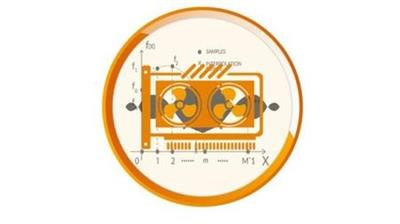
Writing CUDA kernels for interpolation
MP4 | Video: h264, 1280x720 | Audio: AAC, 44.1 KHz, 2 Ch
Genre: eLearning | Language: English + srt | Duration: 6 lectures (1h 12m) | Size: 281.3 MB
Using CUDA textures to interpolate images
What you'll learn:
Nearest-neighbor interpolation of a PGM image
Writing CUDA kernels
Texture filtering
Bilinear interpolation of a PGM image
Texture loopkup
Bicubic interpolation of a PGM image
Interpolation in CUDA
Requirements
Fundamentals of C/C++ and CUDA programming
Basic elements of calculus, especially function approximation
Description
In real-life applications, we want big images: when we watch a video clip on a PC, we like to see it in the full-screen mode. We want high-quality images: if a block of pixels gets damaged during the transmission, we want to repair it. We want cool images: by digital image manipulation, fancy artistic effects as seen in movies can be rendered. We want fast processing, especially when the images are big and many. To process even faster, we want that the various image pixels are processed in parallel.
CUDA (Compute Unified Device Architecture) is a hardware architecture and programming model introduced by NVIDIA for the parallel processing of Graphics Processing Units (GPUs). It represents by now an assessed tool for parallel programming and permits low-level programming capable of achieving very high performance by directly and properly managing the thread work.
In this course, the direct use of CUDA for a simple yet common problem like image interpolation is illustrated. This will enable the attendee to get familiar with the functions running on the GPU, namely, the kernel functions. Being interpolation very common in technical and scientific applications, the development of parallel interpolation codes permits having a tool that can be reused when needed.
What will you learn in this course?
Nearest-neighbor interpolation
Linear and bilinear interpolation
CUDA texture memory
Texture filtering
Nearest-neighbor and linear interpolations of a PGM image
Cubic B-spline interpolation
Bicubic B-spline interpolation of a PGM image
Texture lookup
Catmull-Rom interpolation
Different common interpolation techniques for PGM images will be presented and implemented with customized CUDA kernels, also using CUDA texture memory.
Requirements
You should have basic knowledge of the fundamentals of C/C++ and CUDA programming
You should have basic knowledge of elements of calculus, especially function approximation
Who this course is for
Engineers, Physicists, Mathematicians, Economists
Students, Graduates, PhD
download скачать link:
https://rapidgator.net/file/beee9ae8e1dc77a422ee85bf52035a08/hpn5t.Writing.CUDA.kernels.for.interpolation.rar.html https://nitroflare.com/view/D5DB5DE06DF1EF4/hpn5t.Writing.CUDA.kernels.for.interpolation.rar https://uploadgig.com/file/download скачать/217D8cEdc67c3164/hpn5t.Writing.CUDA.kernels.for.interpolation.rar
Links are Interchangeable - No Password - Single Extraction

